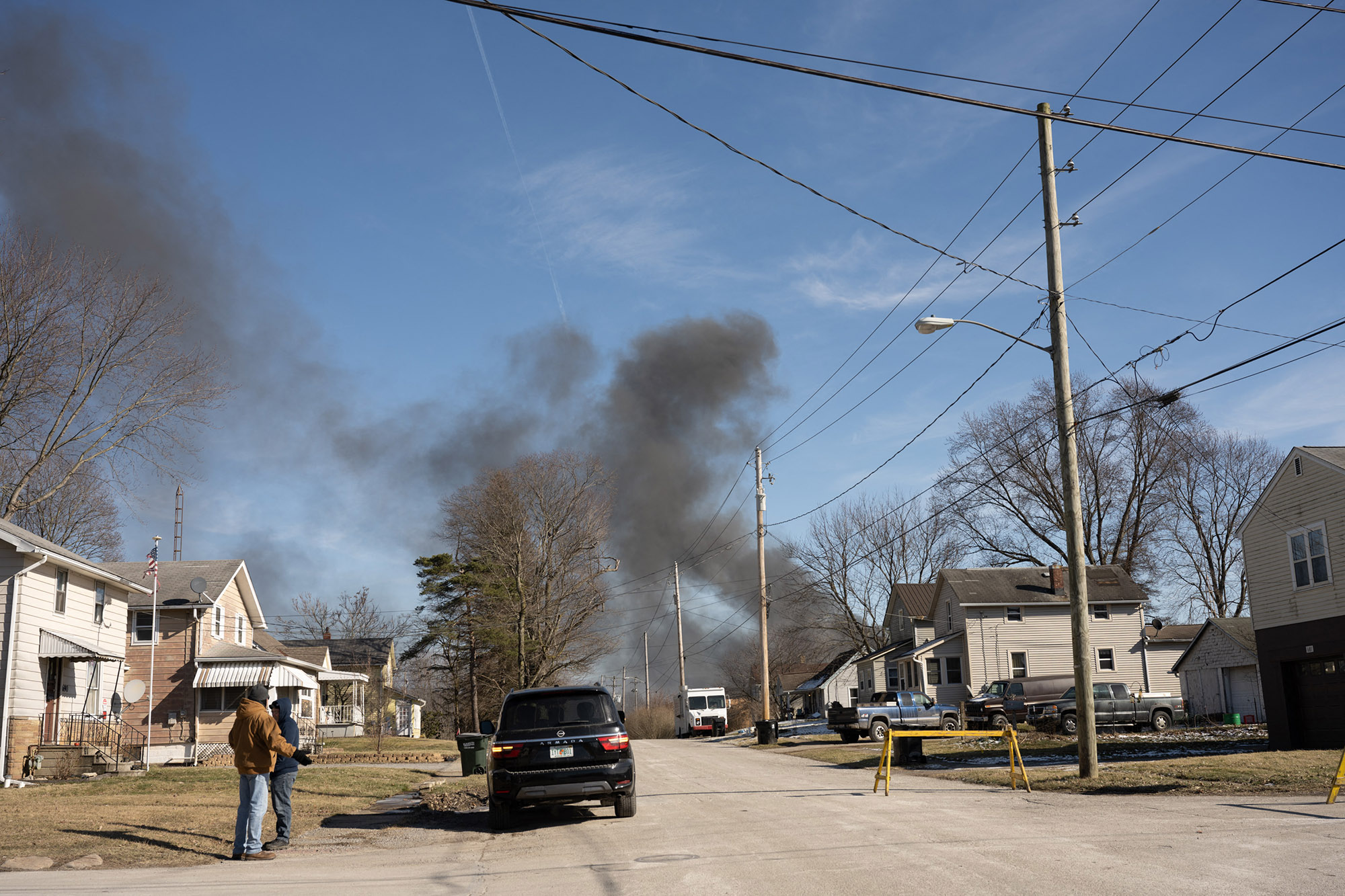Months-Long Lingering Of Toxic Chemicals After Ohio Train Derailment

Table of Contents
The Initial Impact and Immediate Aftermath
On February 3, 2023, a Norfolk Southern freight train derailed in East Palestine, Ohio, resulting in a catastrophic release of hazardous materials. The immediate aftermath saw a controlled burn of vinyl chloride, a known carcinogen, to prevent a potential explosion. This decision, however, sparked immediate controversy and criticism, with many questioning the long-term effects of burning these toxic chemicals and the potential for further environmental contamination. The initial response efforts, while aiming to mitigate immediate risks, were criticized for a lack of transparency and communication with affected residents.
- Chemicals Released: Vinyl chloride, butyl acrylate, ethylhexyl acrylate, and other toxic substances were released, each posing unique health risks. Vinyl chloride, for example, is linked to liver cancer, brain and lung tumors, and other serious health problems. Butyl acrylate can cause respiratory irritation, skin sensitization, and eye damage.
- Initial Contamination Reports: Early reports indicated contamination of water sources and air quality in the immediate vicinity of the derailment. Residents reported experiencing headaches, nausea, and respiratory issues.
- Evacuation and its Impact: Mandatory evacuations were ordered for residents within a one-mile radius of the derailment site, causing significant disruption to lives and livelihoods. The long-term consequences of this displacement remain to be seen.
Long-Term Environmental Contamination
The concern extends far beyond the immediate aftermath. The persistence of toxic chemicals in the soil, water, and air represents a significant long-term environmental threat. While some cleanup efforts are underway, the full extent of the contamination and its long-term effects remain unclear. The lack of comprehensive, independent testing and monitoring raises serious concerns about the adequacy of the response.
- Persistence of Chemicals: Studies are needed to fully understand the persistence of these chemicals in the environment. The potential for leaching into groundwater and soil contamination presents a significant threat to the local ecosystem for years to come.
- Impact on Agriculture: The contamination poses a significant risk to local agriculture and food production. The long-term impact on soil fertility and the potential for contamination of crops and livestock requires thorough investigation.
- Bioaccumulation in the Food Chain: There's a serious concern about bioaccumulation—the increasing concentration of toxins in organisms as they move up the food chain. This could have devastating consequences for wildlife and potentially impact human health through the consumption of contaminated food.
Health Concerns and Long-Term Impacts on Human Health
The potential long-term health risks to residents, first responders, and wildlife are deeply concerning. While immediate health effects have been reported, the long-term consequences of exposure to these toxic chemicals are not yet fully understood. Comprehensive, long-term health monitoring is crucial to assess the full impact.
- Reported Health Issues: Residents have reported a wide range of health problems, including respiratory issues, skin irritation, headaches, nausea, and other symptoms. The correlation between these issues and chemical exposure needs further investigation.
- Long-Term Health Risks: Exposure to vinyl chloride, butyl acrylate, and other released chemicals is associated with a range of long-term health risks, including cancer, organ damage, and reproductive problems.
- Need for Long-Term Monitoring: A comprehensive and independent long-term health monitoring program is essential to track the health of residents and first responders exposed to these chemicals. This program must include regular screenings and detailed data collection.
The Need for Comprehensive Remediation
Cleaning up the contamination from the Ohio train derailment presents significant challenges. The scale of the contamination, the complexity of the chemical mixtures involved, and concerns about the adequacy of the cleanup efforts all contribute to the urgency of the situation. Transparency and accountability are paramount.
- Remediation Techniques: Various remediation techniques, including soil excavation, groundwater treatment, and air purification, may be necessary. However, the effectiveness and long-term impact of these methods need careful evaluation.
- Containing Contamination: Preventing further spread of contamination is crucial. This requires rigorous monitoring and innovative strategies to prevent the migration of chemicals into water sources and surrounding areas.
- Cost and Time Estimates: The cost and time required for a complete and effective cleanup are likely to be substantial, demanding significant financial resources and a long-term commitment.
Political and Legal Ramifications
The Ohio train derailment has ignited significant political and legal fallout. Lawsuits have been filed against Norfolk Southern and government agencies, highlighting concerns about inadequate safety regulations and corporate responsibility.
- Legal Proceedings: Multiple lawsuits are underway, involving residents, first responders, and environmental groups, seeking compensation for damages and demanding accountability.
- Regulatory Oversight: The accident has reignited debates about railway safety regulations, environmental protection laws, and the need for stricter oversight of hazardous materials transportation.
- Government Accountability: There are increasing calls for greater transparency and accountability from government agencies involved in the response and regulatory oversight.
Conclusion
The Ohio train derailment serves as a stark reminder of the devastating and long-lasting consequences of industrial accidents involving hazardous materials. Months later, the months-long lingering presence of toxic chemicals continues to pose significant risks to human health and the environment, highlighting the urgent need for comprehensive remediation efforts, thorough investigation, and stricter safety regulations. Demand accountability and transparency from government agencies and the railway industry regarding the ongoing cleanup and health monitoring related to the months-long lingering effects of toxic chemicals from the Ohio train derailment. Stay informed about the latest developments and advocate for stronger environmental protection measures to prevent future catastrophes.

Featured Posts
-
 Is Marv Albert The Greatest Basketball Announcer Mike Breen Weighs In
Apr 28, 2025
Is Marv Albert The Greatest Basketball Announcer Mike Breen Weighs In
Apr 28, 2025 -
 2000 Yankees Diary Bombers Defeat Royals In Thrilling Victory
Apr 28, 2025
2000 Yankees Diary Bombers Defeat Royals In Thrilling Victory
Apr 28, 2025 -
 Le Bron James Comments On Richard Jeffersons Espn Appearance
Apr 28, 2025
Le Bron James Comments On Richard Jeffersons Espn Appearance
Apr 28, 2025 -
 Mwed Antlaq Fealyat Fn Abwzby 19 Nwfmbr
Apr 28, 2025
Mwed Antlaq Fealyat Fn Abwzby 19 Nwfmbr
Apr 28, 2025 -
 Former Nba Star Jj Redick Supports Espns Move With Richard Jefferson
Apr 28, 2025
Former Nba Star Jj Redick Supports Espns Move With Richard Jefferson
Apr 28, 2025
